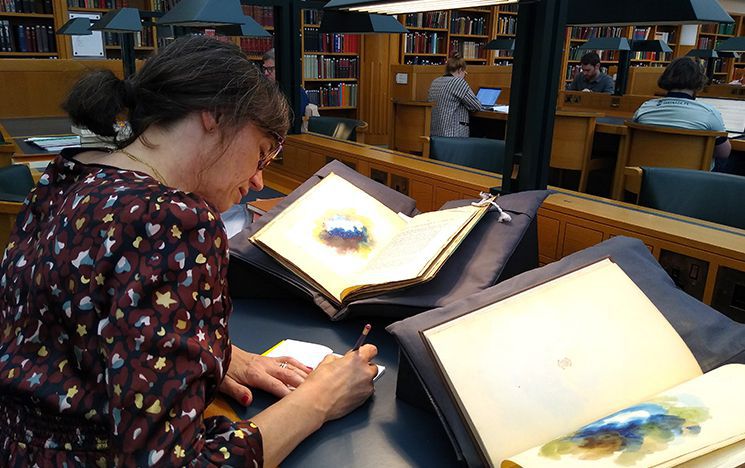Lives in Colour
Led by art historian Dr Alexandra Loske, this project aims to gather information about the lives and work of women who wrote about, engaged with and taught colour, from the eighteenth century onward.

Image credit: Steve Pavey
About the project
The aim of this project is to create a list of women in colour history, record their work, and establish how each one was able to engage with a subject traditionally associated with men (some referred to as 'colourmen'). The project is led by Dr Alexandra Loske, an art historian, curator, oral historian and Research Associate for the Centre for Life History and Life Writing Research. She has published, taught and lectured widely on the history of colour.
The women redefining colour writing
Examples of women writing and publishing on colour before the twentieth century are extremely rare. In his comprehensive bibliography ‘Books on Colour 1495-2025’, Roy Osborne estimates that in the nineteenth-century approximately 430 original books on colour were published in Europe, Asia and the Americas, compared to an estimated 1,500 in the twentieth century. Of the nineteenth-century publications, fewer than twenty were authored by women (although we can cautiously add a few more of anonymous authorship, and publications that have never been recorded or don’t survive).
Few women wrote about colour specifically. Instead they considered colour in certain contexts, frequently botany or flower painting, the latter considered a ‘polite art’ and thus suitable for ladies. Among these are Anne Pratt (1806-1893) and Elizabeth Twining (1805-1889).
The first woman who can be identified in colour history as an author of published treatises on colour is the English flower painter Mary Gartside. Very little is known about her life, but she taught watercolour painting to ladies and exhibited botanical drawings at the Royal Academy in 1781 and at other London venues until 1808. In 2024, Loske published the first monograph on Gartside – ‘Mary Gartside c.1755-1819: Abstract Visions Of Colour’ (London: Paul Holberton/Thomas Heneage Art Books).
In the last two decades of the nineteenth century there was a surge in practical handbooks and textbooks on colour, as well as an interesting example of literary criticism by the US American writer Alice Edwards Pratt (1860-1902). Her PhD thesis on The Use of Color in the Verse of the English Romantic Poets (1898) can cautiously be regarded as the beginning of the inclusion of women into the scholarly canon of colour literature. Other, less academic works often concern the familiar subjects long associated with the female sphere, such as fashion, flowers, home decoration and school primers. This remains a tendency in the twentieth century, but the dramatic rise in publications generally also provided opportunities for experimental writing.
Project highlights
In April 2022, a related article by Kelly Grovier appeared on the BBC Culture website, for which Alexandra Loske was interviewed – The Women who Redefined Colour.
On 7 October 2024, Alexandra Loske gave the prestigious Mondrian Lecture at the award ceremony of the Sikkens Prize 2024, awarded to the artist Pipilotti Rist at the Kunsthal Rotterdam. Previous speakers include Simon Schama, Umberto Eco, Rem Koolhaas, and Donald Judd. Alexandra Loske was the first woman to deliver the Mondrian Lecture and spoke about pioneering women in colour history.

A display of books by women writing on colour

Alexandra Loske speaking on stage at Mondrian Lecture. Image credit: Anne Reitsma

